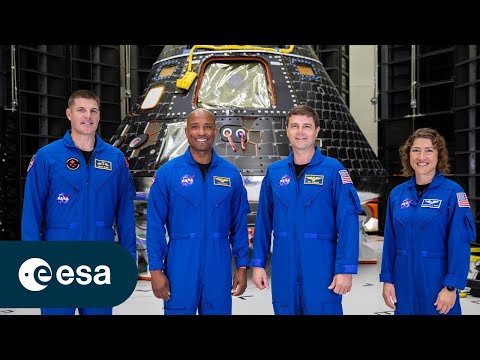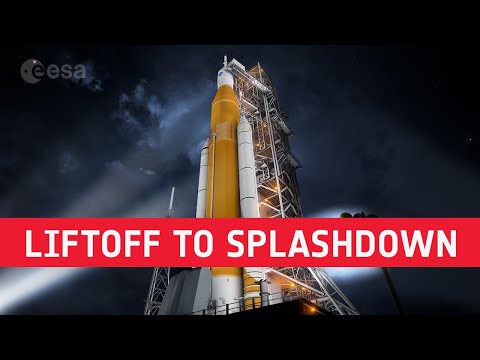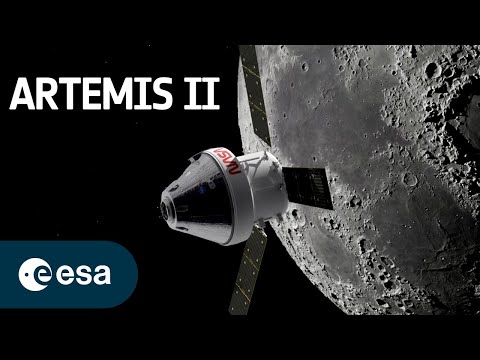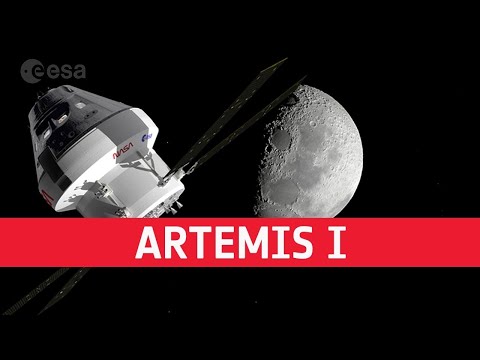European push to the Moon
The European Space Agency is playing a vital role in humankind’s return to the Moon. In a few months @NASA will launch Artemis I from the Kennedy Space Center. The uncrewed mission will carry NASA’s Orion spacecraft incorporating ESA’s European Service Module (ESM-1), built and tested by Airbus Bremen, in Germany, with the help of 10 European nations. ESM-1’s main engine and 32 thrusters will propel Orion into orbit around the Moon and return it to Earth.
As Artemis I prepares for launch, the second European Service Module (ESM-2) is about to ship to the US with ESM-3 also currently under construction. The second Artemis mission, however, has a crucial difference: it will carry four astronauts for a lunar flyby. ESM-2 will provide propulsion, power, oxygen, water and life support as well as controlling the temperature in the orbiting crew module. ESM-3 will go one step further and put the first person on the Moon for 50 years.
Learn more about Orion: https://bit.ly/ESAsOrion
★ Subscribe: http://bit.ly/ESAsubscribe and click twice on the bell button to receive our notifications.
Check out our full video catalog: http://bit.ly/SpaceInVideos
Follow us on Twitter: http://bit.ly/ESAonTwitter
On Facebook: http://bit.ly/ESAonFacebook
On Instagram: http://bit.ly/ESAonInstagram
On Pinterest: https://bit.ly/ESAonPinterest
On Flickr: http://bit.ly/ESAonFlickr
We are Europe’s gateway to space. Our mission is to shape the development of Europe’s space capability and ensure that investment in space continues to deliver benefits to the citizens of Europe and the world. Check out https://www.esa.int/ to get up to speed on everything space related.
Copyright information about our videos is available here: https://www.esa.int/ESA_Multimedia/Terms_and_Conditions
#ESA
#Orion
#Artemis





Exciting times.
Cool to see international cooperation continue
How does rocket propulsion work without atmosphere in the vacuum of space?
I thought spaceX won the contract to land the next Americans on the moon?
ESA will make going back to them more better visuals wise! Meaning ESA makes it beautiful and for that we appreciate it.
It's hard to 'push' with fickle public funds. SpaceX can develop quickly because Starlink profits depend on a 'space-trucking' division. For similar rocketry growth in Europe, we must find a commercial way to fund it.
This was done more than 50 years ago.
Canada has gotten two seats on Artemis and Gateway missions in exchange of a single robotic arm to Gateway. ESA hasn't gotten a single seat in exchange of its vastly greater contribution, and should not play the role of the gullible fool, which wastes its own funds to a US project – which can be cancelled at any time by new US adminstration or congress – without getting anything in exchange.
Lua Fabulosa…a ESA vai ao teu encontro!! Que admirável esta nova etapa de exploração!
Oh mein Gott, das ist der Hammer! So aufregend! Als würde es jetzt bald losgehen, als würde es endlich losgehen!!
Wao modue orion
In 50 years, the government funded space technology has gone backwards. ESM: 63,7% mass fraction. Apollo CSM SM: 75,1% mass fraction. Close to identical purpose and propellants.
Without SpaceX, we would be in a depressing state of space exploration, and SLS is a prime example of that. It's old and ridicoulously expensive technology everywhere.
Sorry to state the obvious, but I as an ESA taxpayer am not getting value for my money. I get much more space interest and exploration value from a private company, for which I pay 0 (and can even earn money from if I invest in their stock), then ESA, which costs €6,500,000,000 every year. Less than one tenth of that amount actually goes to science by the way.
My country would be better off leaving ESA and then giving all the saved money to scientific satellite projects all over the world in exchange for participation and science time. There would be more projects to choose from and our share of the spacecraft budget would be higher, giving our scientists more to do and more influence.
INCRÍVEL..ESPETACULAR…